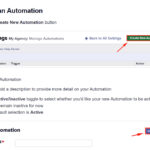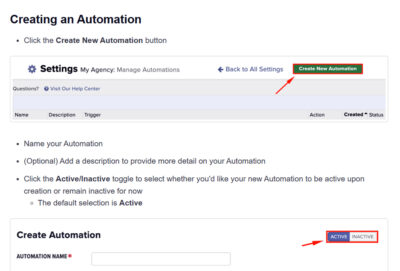Sustainability and Corporate Social Responsibility (CSR) have emerged as integral components of modern business strategies. As global concerns about climate change, social equity, and ethical business practices intensify, organizations are under increasing pressure to prioritize sustainability and CSR in their operations.
This paradigm shift presents a unique set of challenges for professional recruiters and search consultants. Their roles in identifying, attracting, and retaining talent for organizations have become more complex, demanding a deep understanding of sustainability and Corporate Social Responsibility.
In this extensive blog post, we will examine the multifaceted challenges associated with sustainability and CSR, exploring issues such as talent acquisition, leadership development, cultural alignment, and stakeholder engagement. In addition, we will present a range of practical solutions that professional recruiters and search consultants can implement to overcome these challenges and facilitate their clients’ journey toward sustainable and socially responsible practices.
Challenges and Solutions
1. Talent Acquisition and Identification
Challenge: Finding Candidates with Sustainability and CSR Expertise
The scarcity of professionals with expertise in sustainability and Corporate Social Responsibility poses a significant challenge for recruiters. Organizations often struggle to identify candidates with the right skill set and experience to drive their sustainability initiatives forward. The traditional recruitment pipelines might not suffice when looking for specialized skill sets and a deep commitment to sustainability and ethical practices.
Solutions:
- Networking and Partnerships: Recruiters should actively engage with sustainability-focused organizations, academic institutions, and industry associations to build a robust network of potential candidates. Establish relationships with universities offering programs in sustainability and environmental sciences. Attend sustainability conferences and job fairs to connect with professionals who have a passion for environmental and social issues. Partnering with organizations like the Sustainability Consortium or GreenBiz can also open doors to a pool of qualified candidates.
- Skill Assessment: Utilize skill assessment tools and tests to evaluate candidates’ knowledge and commitment to sustainability and CSR principles. These assessments can include scenario-based questions that gauge how candidates might handle real-world sustainability challenges. Implementing tools like the Global Reporting Initiative (GRI) certification or the Sustainability Accounting Standards Board (SASB) credentialing can help verify a candidate’s expertise in sustainability.
- Targeted Job Descriptions: Craft job descriptions that clearly articulate the importance of sustainability and CSR, attracting candidates who are genuinely passionate about these issues. Highlight the organization’s commitment to these values and outline specific responsibilities related to sustainability and CSR. Use specific language that speaks to the sustainability goals and missions of the organization, ensuring the job description resonates with potential candidates who share these values.
2. Leadership Development and Succession Planning
Challenge: Developing Future Sustainability Leaders
Organizations aiming to embed sustainability in their DNA often grapple with developing leaders who can champion these initiatives. Succession planning for sustainability-focused leadership roles is essential but not always straightforward. Many organizations lack a structured approach to identifying and nurturing potential leaders with a strong understanding of sustainability and Corporate Social Responsibility.
Solutions:
- Mentorship Programs: Implement mentorship programs that pair emerging leaders with experienced sustainability champions to nurture the next generation of leaders. Encourage mentors to share their experiences, challenges, and successes in implementing sustainability initiatives. These programs can also include cross-industry mentorship, allowing leaders to gain insights from different sectors.
- Leadership Training: Provide ongoing leadership development programs that emphasize sustainability and CSR as core competencies. Include modules on environmental management, social impact, and ethical governance. Programs like the Sustainability Leadership Program from Harvard Extension School can provide leaders with the necessary skills and knowledge to drive sustainability initiatives.
- 360-Degree Feedback: Collect feedback from employees, customers, and stakeholders to identify leadership candidates who exhibit the qualities required for sustainability-focused roles. Use this feedback to tailor development plans for future leaders. Implement tools like the Leadership Circle Profile, which provides a comprehensive view of a leader’s effectiveness and areas for development.
3. Cultural Alignment and Integration
Challenge: Embedding Sustainability Values
Ensuring that sustainability and Corporate Social Responsibility values are integrated into an organization’s culture can be a daunting task. Aligning employee behaviors and attitudes with these values is essential for long-term success. Without a strong cultural alignment, sustainability initiatives may face resistance or lack the necessary support to thrive.
Solutions:
- Leadership Example: Encourage top executives to lead by example, demonstrating a commitment to sustainability and CSR. Leaders should actively participate in sustainability initiatives and communicate their importance regularly. Publicly sharing sustainability goals and achievements can also reinforce the organization’s commitment.
- Communication and Education: Conduct regular training sessions and communication campaigns to educate employees about sustainability and CSR principles. Use engaging formats like workshops, webinars, and interactive e-learning modules. Platforms like Coursera or LinkedIn Learning offer courses on sustainability that can be integrated into employee training programs.
- Incentive Structures: Align performance appraisal and incentive structures with sustainability objectives to motivate employees to embrace these values. Reward employees who contribute to sustainability projects or suggest innovative solutions. Implement programs like sustainability awards or bonuses tied to achieving sustainability milestones.
4. Stakeholder Engagement
Challenge: Navigating Complex Stakeholder Interactions
Managing stakeholder relationships can be challenging, as different groups may have varying expectations and demands regarding sustainability and Corporate Social Responsibility efforts. Effective stakeholder engagement requires understanding these diverse perspectives and finding common ground.
Solutions:
- Stakeholder Mapping: Develop a comprehensive understanding of stakeholder interests and priorities related to sustainability and CSR. Create detailed profiles of key stakeholders, including their concerns, influence, and level of engagement. Tools like the Stakeholder Circle can help visualize and manage stakeholder relationships.
- Engagement Strategies: Tailor engagement strategies for different stakeholder groups, ensuring open communication channels. Use surveys, focus groups, and public forums to gather input and foster dialogue. Developing a stakeholder engagement plan that outlines the methods and frequency of communication can help manage expectations.
- Transparency and Reporting: Be transparent about sustainability efforts and progress through regular reporting and disclosure mechanisms. Publish detailed sustainability reports that highlight achievements, challenges, and future goals. Use frameworks like the Global Reporting Initiative (GRI) or the Sustainability Accounting Standards Board (SASB) for consistent and credible reporting.
5. Measuring Impact and Reporting
Challenge: Quantifying Sustainability Success
Measuring the impact of sustainability initiatives and reporting on progress is critical for transparency and accountability, but it can be challenging without standardized metrics. Organizations need reliable data to demonstrate their commitment to sustainability and the tangible outcomes of their efforts.
Solutions:
- Adopting Standard Metrics: Encourage clients to adopt recognized sustainability reporting frameworks like GRI (Global Reporting Initiative) or SASB (Sustainability Accounting Standards Board). These frameworks provide standardized metrics for measuring and reporting sustainability performance. Implementing these frameworks ensures that the data collected is comparable and credible.
- Data Analytics: Leverage data analytics tools to collect and analyze sustainability data, providing insights into performance and areas for improvement. Use software solutions that integrate with existing business systems to streamline data collection. Tools like Tableau or Power BI can help visualize data and track sustainability metrics over time.
- Materiality Assessments: Prioritize sustainability efforts based on materiality assessments, focusing on the issues that matter most to stakeholders. Conduct regular reviews to ensure that sustainability initiatives remain aligned with stakeholder expectations. Engage with stakeholders to identify material issues and prioritize actions that address these concerns.
6. Regulatory Compliance
Challenge: Navigating Evolving Regulations
Staying compliant with constantly evolving sustainability and Corporate Social Responsibility regulations can be a daunting task for organizations, leading to legal and reputational risks. Organizations must navigate a complex web of local, national, and international regulations related to sustainability.
Solutions:
- Dedicated Compliance Teams: Encourage clients to establish dedicated teams or roles responsible for tracking and ensuring compliance with sustainability regulations. These teams should include legal experts, sustainability professionals, and compliance officers. Regular training and updates can keep the team informed about regulatory changes.
- Regular Updates: Stay informed about regulatory changes through industry associations, government publications, and legal experts. Subscribe to newsletters and attend webinars focused on regulatory updates. Resources like the Environmental Protection Agency (EPA) and the International Organization for Standardization (ISO) provide valuable information on regulatory requirements.
- External Audits: Conduct regular external audits to assess compliance and identify potential areas of improvement. Hire third-party auditors who specialize in sustainability and CSR to provide an objective assessment. Audits can help identify gaps in compliance and opportunities for improvement.
7. Communication and Branding
Challenge: Authentic Communication
Authenticity is key when communicating sustainability and CSR efforts to the public. Greenwashing, or falsely presenting an organization as more sustainable than it is, can lead to significant reputational damage. Transparent and honest communication is essential to build trust and credibility.
Solutions:
- Transparency: Prioritize transparency in communication, being honest about both successes and challenges in sustainability initiatives. Share detailed case studies and impact stories that illustrate real-world outcomes. Transparency builds trust and demonstrates a genuine commitment to sustainability.
- Storytelling: Craft compelling narratives that highlight the positive impact of sustainability and CSR efforts on stakeholders and communities. Use multimedia formats like videos, infographics, and social media to reach a wider audience. Storytelling can make complex sustainability issues more relatable and engaging.
- Stakeholder Involvement: Involve stakeholders in the communication process to ensure their perspectives are accurately represented. Conduct stakeholder interviews and include their testimonials in sustainability reports. Engaging stakeholders in the communication process can enhance credibility and foster a sense of ownership.
8. Supply Chain Sustainability
Challenge: Ensuring Ethical and Sustainable Supply Chains
Supply chain sustainability has become a significant concern, with increasing scrutiny on sourcing, labor practices, and environmental impacts within the supply chain. Organizations must ensure that their suppliers adhere to the same sustainability standards they uphold.
Solutions:
- Supplier Audits: Implement regular audits of suppliers to assess their adherence to sustainability and ethical standards. Use third-party auditors to ensure objectivity and credibility. Audits can identify areas for improvement and ensure compliance with sustainability standards.
- Supplier Collaboration: Collaborate with suppliers to jointly work on sustainability improvements and share best practices. Establish long-term partnerships and provide support for capacity-building initiatives. Collaboration can lead to innovative solutions and shared benefits.
- Supply Chain Mapping: Develop a comprehensive map of the supply chain to identify high-risk areas and opportunities for improvement. Use supply chain transparency tools to track and monitor sustainability performance. Mapping the supply chain can help identify potential risks and areas for intervention.
9. Employee Well-being and Engagement
Challenge: Balancing Employee Well-being with Organizational Goals
Sustainability and Corporate Social Responsibility efforts can sometimes place additional demands on employees, leading to burnout or disengagement. Balancing the pursuit of sustainability goals with the well-being of employees is essential for long-term success.
Solutions:
- Flexible Work Arrangements: Offer flexible work arrangements to accommodate employees’ sustainability-related activities or volunteer efforts. Implement policies that support work-life balance and remote work options. Flexible work arrangements can enhance employee well-being and engagement.
- Well-being Programs: Implement well-being programs that address physical, mental, and emotional health to support employee resilience. Provide access to wellness resources, mental health support, and fitness programs. Well-being programs can improve employee satisfaction and productivity.
- Employee Feedback: Regularly seek feedback from employees to understand their needs and concerns regarding sustainability initiatives. Use surveys, suggestion boxes, and town hall meetings to gather input and make improvements. Engaging employees in the process can enhance their commitment and contribution to sustainability efforts.
10. Continuous Improvement and Adaptation
Challenge: Staying Agile and Adapting to Change
Sustainability and Corporate Social Responsibility are dynamic fields, constantly evolving with new challenges and opportunities. Organizations must remain agile and adapt to stay relevant. Continuous improvement and adaptation are essential to sustain momentum and drive long-term success.
Solutions:
- Scenario Planning: Develop scenarios to anticipate future sustainability challenges and create action plans to address them. Use strategic foresight techniques to identify emerging trends and potential disruptions. Scenario planning can help organizations prepare for different future scenarios and respond effectively.
- Cross-functional Teams: Form cross-functional teams within organizations to facilitate agility and responsiveness to emerging sustainability trends. Include representatives from different departments to ensure diverse perspectives. Cross-functional teams can enhance collaboration and innovation.
- Benchmarking: Continuously benchmark against industry peers and sustainability leaders to identify areas for improvement. Participate in sustainability rankings and indices to track progress and gain insights. Benchmarking can provide valuable insights and motivate continuous improvement.
Professional recruiters and search consultants play a crucial role in helping organizations navigate the complexities of sustainability and Corporate Social Responsibility. By understanding the challenges and implementing the solutions outlined in this guide, recruiters can effectively support their clients in building a sustainable and socially responsible workforce.
This not only enhances the organization’s reputation but also contributes to long-term business success and positive social impact. As the demand for sustainability and CSR expertise continues to grow, recruiters must stay informed, agile, and committed to fostering a culture of ethical and sustainable business practices.









